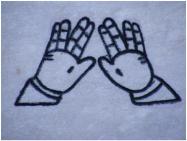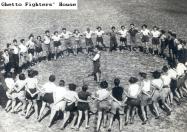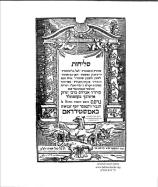(73 results found)
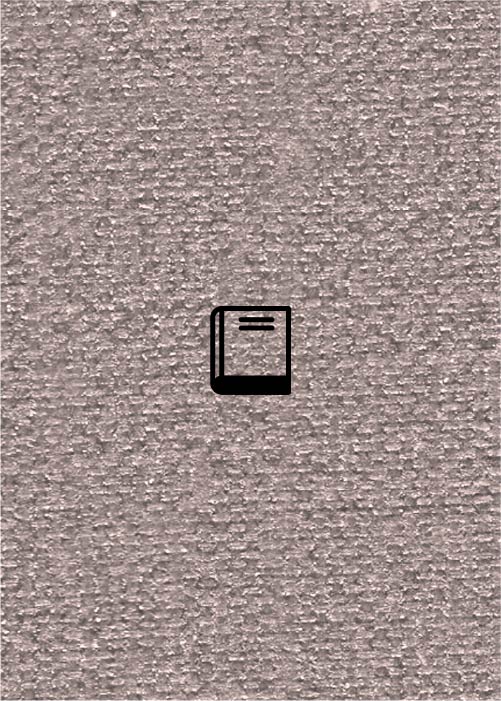
Worlds That Passed
… Simḥah Zaḳs … A. S. Sachs … Jewish life and customs … Lithuania … Lithuanian jews … Eastern Ashkenazi … Abraham Simchah Sachs …
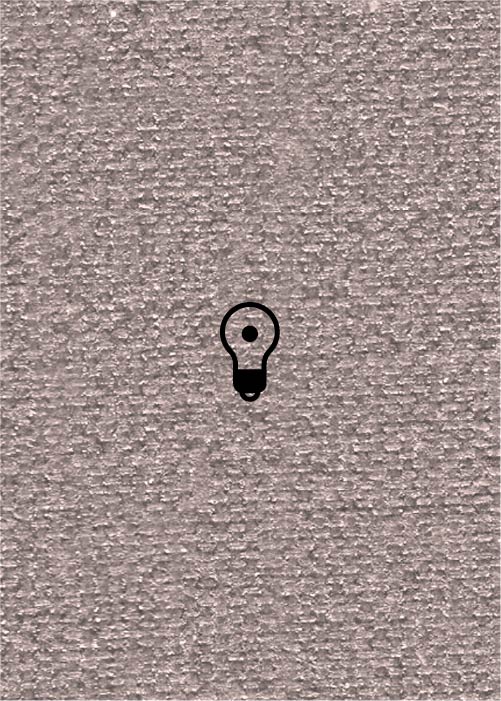
Bazetsens (LKT)
… at the seating of the bride before the wedding.” [Vilna, Lithuania, 1920s]. Bernstein 1927, p. 95 . ( Musical … and afterwards the bride was ritually seated.” [Vilna, Lithuania, 1890s]. Matskevits 1893 . “‘Kaleh Bazetsen …

Badekns (LKT)
… out names, and the klezmer would play along.” [Vilna, Lithuania, c. 1870s-80s]. Zizmor 1922a, p. 874 . … Badekns …

Dobridzien (LKT)
… at the heads of the streams of people.” [Ritova (Rietavas), Lithuania, pre-World War II]. Grod 1948, pp. 33-34 . ( … for the parents of the bride and groom...” [Vilna, Lithuania, 1880-1900]. Zizmor 1922a, p. 874 . “After songs … real badkhn and became a badkhn in his own right.” [Vilna, Lithuania, 1870s-80s]. Zizmor 1922b, p. 876 . “In the …

Zay gezunt (LKT)
… Bernstein (1927:243) says these pieces were played also in Lithuania. On leaving, the matchmakers cried, after which … melody becomes happy and people dance a karahod .” [Vilna, Lithuania, 1920s]. Bernstein 1927, p. 96 . “Z ay gezunt .” …
In Zaltsikn Yam - A Yiddish Workers' Song
… for the Bund, the General Union of Jewish Workers in Lithuania, Poland, and Russia (Der Algemeyner Yidisher … der yiddisher arbeter Bund,” (long live the Russian, Lithuanian, and Polish Jewish labor Bund). This song clearly …

Karaite Jews Musical Tradition
… were formed in Egypt and Byzantium as well as in Crimeria, Lithuania, and Eastern Poland. During that period, the … Bibliography Ahiezer, G. and D. Shapira. 'Karaites in Lithuania and in Volhynia-Galicia until the 18 th century.' … 89. (2002): 5-18. Firkaviciute, K. 'The Musical Heritage of Lithuania's Karaim.' Karaite Judaism . Ed. M. Polliak. …
Priestly Blessing- Birkat Kohanim
… While all of the Jewish communities, from Yemen to Lithuania, developed unique melodies for the blessing, the … these verses out loud. In the late nineteenth century, in Lithuanian and Latvian synagogues, they were even sung as …
Hora
… In the second half of the twentieth century, Hassidic and Lithuanian Yeshiva students in Israel, who until then danced …
Seliha-Selihot
… 1979. NSA YC1463. See text in a Seder Selihot of the Lithuanian tradition. … Piyyutim … Piyyut … Liturgical music …




